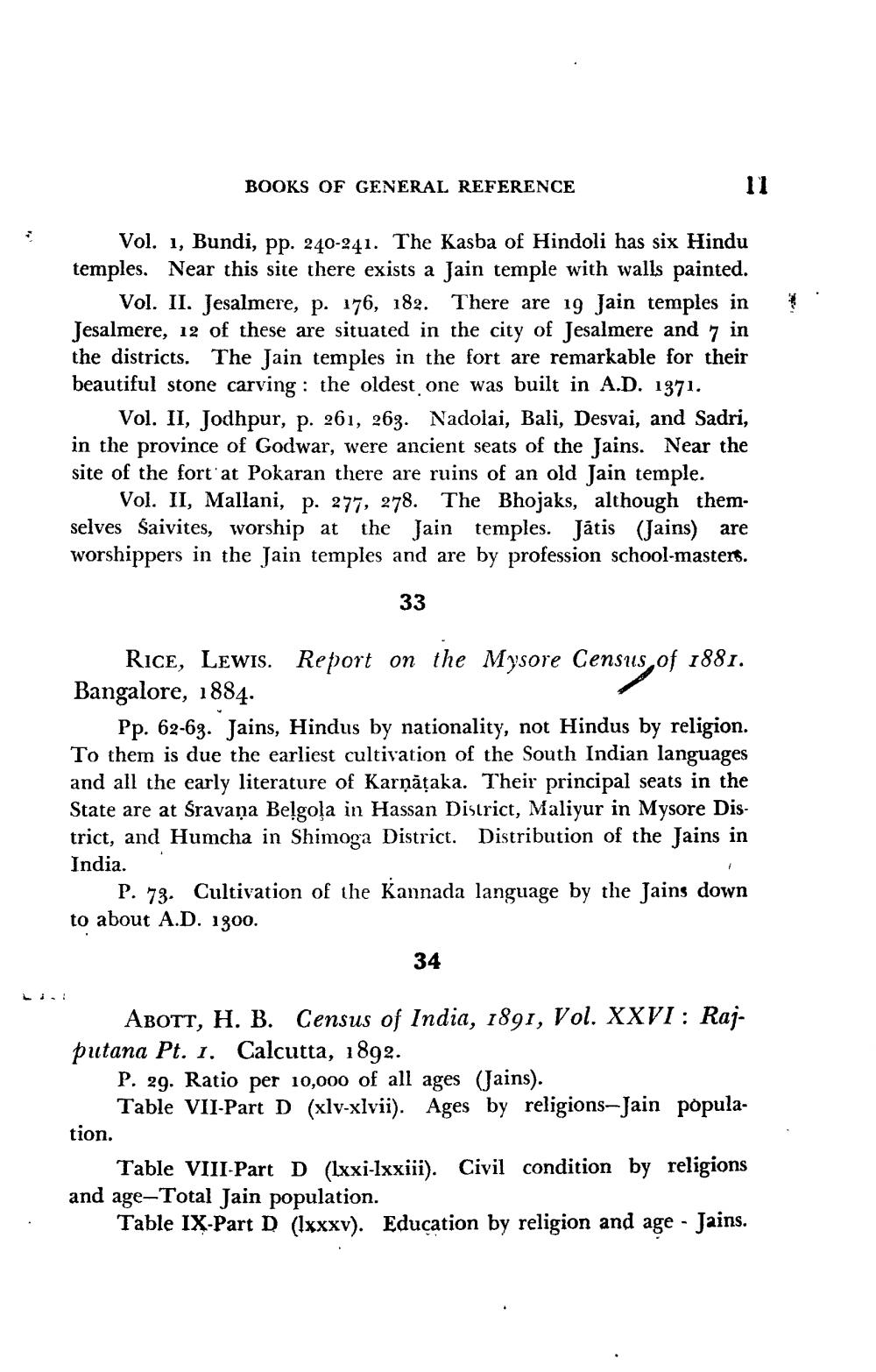________________
BOOKS OF GENERAL REFERENCE
11
Vol. 1, Bundi, pp. 240-241. The Kasba of Hindoli has six Hindu temples. Near this site there exists a Jain temple with walls painted.
Vol. II. Jesalmere, p. 176, 182. There are 19 Jain temples in Jesalmere, 12 of these are situated in the city of Jesalmere and 7 in the districts. The Jain temples in the fort are remarkable for their beautiful stone carving : the oldest one was built in A.D. 1371.
Vol. II, Jodhpur, p. 261, 263. Nadolai, Bali, Desvai, and Sadri, in the province of Godwar, were ancient seats of the Jains. Near the site of the fort'at Pokaran there are ruins of an old Jain temple.
Vol. II, Mallani, p. 277, 278. The Bhojaks, although themselves Saivites, worship at the Jain temples. Játis (Jains) are worshippers in the Jain temples and are by profession school-masters.
33
Rice, LEWIS. Report on the Mysore Census of 1881. Bangalore, 1884
Pp. 62-63. Jains, Hindus by nationality, not Hindus by religion. To them is due the earliest cultivation of the South Indian languages and all the early literature of Karşățaka. Their principal seats in the State are at Śravaņa Belgoļa in Hassan District, Maliyur in Mysore District, and Humcha in Shimoga District. Distribution of the Jains in India. '
P. 73. Cultivation of the Kannada language by the Jains down to about A.D. 1300.
34
ABOTT, H. B. Census of India, 1891, Vol. XXVI : Rajputana Pt. 1. Calcutta, 1892.
P. 29. Ratio per 10,000 of all ages (Jains).
Table VII-Part D (xlv-xlvii). Ages by religions- Jain population.
Table VIII-Part D (lxxi-lxxiii). Civil condition by religions and age- Total Jain population.
Table IX-Part D (lxxxv). Education by religion and age - Jains.




